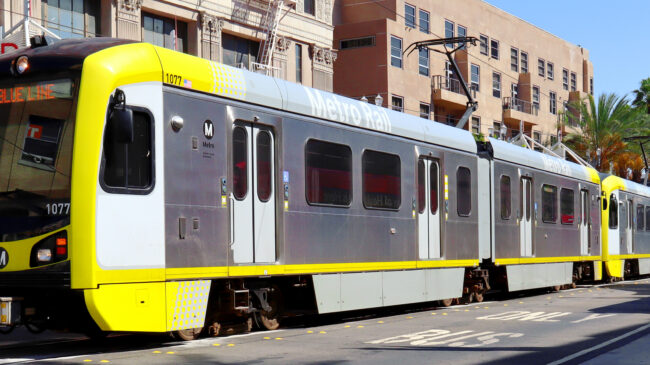Many of the largest mass transit systems across the country, including Los Angeles Metro, Dallas Area Rapid Transit Authority, Houston Metro, and Seattle’s Sound Transit are spending billions of dollars building new light rail lines. Often these light rail projects and expansions are funded by general sales taxes, which can undercut equity goals in these cities because sales taxes are the most regressive transportation funding source. It’s also troubling that many of these mass transit agencies are cutting their bus services to add light rail services aimed at transit choice riders—even though their existing bus services are more likely to serve low-income, transit-dependent customers.
According to the 2017 National Household Travel Survey, which was released in 2019 and conducted by the Federal Highway Administration, incomes are diverging between bus and rail riders. The survey found rail use in 2017 was highest among white riders earning between $125,000 and $200,000 per year. Rail use was lowest for riders of color earning $10,000 to $50,000 a year. Meanwhile, bus use was highest among people of color making less than $35,000 per year. Bus use was lowest for white riders making $75,000 or more per year.
Almost 8% of commuters making less than $10,000 use buses, the travel survey found. While not every region in the country offers major rail services, the survey shows less than 1% of commuters making less than $10,000 a year use rail.
Meanwhile, higher-income groups are unlikely to ride buses, the survey found. Less than 1% of American commuters making more than $100,000 a year use buses to commute. Middle-class customers (those in the third income quintile of $47,110 to $77,552 per year) use rail the least, making fewer than two billion trips per year. The wealthiest commuters (those in the fifth quintile, making over $126,855 per year) actually use transit more than working-class customers (second quintile, of $24,638 to $47,110 a year) and middle-class customers (third quintile).
Clearly, mass transit use is bifurcated. And while bus riders have lower incomes than average Americans, rail riders have much higher incomes than average. The geographic location of rail systems certainly plays a part. Rail transit systems are more relied upon and concentrated in expensive metro areas like Washington, D.C., Boston, and New York City— driving up the average income figures for rail users.
But overall, the Unites States has created two types of mass transit services in this country: a higher-quality rail system that serves older, wealthier, white people and a lower-quality bus system that is more relied upon by younger, poorer, communities of color.
Why is the bus system lower quality in many major American cities? One reason is that when cities build and open rail lines, bus service is often cut. The reductions in bus service often lead to bus networks that link fewer origins and destinations, especially linking places with lower housing costs to places of employment.
Of the four metro areas with more than four million people and extensive light-rail systems—Los, Angeles, Dallas, Houston, and Seattle—all four cut their bus service significantly when their rail lines opened.
And while some of these reductions were by design—with hopes that bus riders would shift from buses to rail, some of the bus service cuts occurred because the rail lines went over budget and the transit agencies chose to cut bus routes in an effort to dig out of their financial holes. It’s worth noting that these budget problems had been at least partially caused by the high costs of their rail lines.
As a result of their cuts to bus service, three of the four transit systems (Los Angeles, Dallas, Houston) carried fewer total transit riders after their rail systems opened than before. Further, since most of the new rail riders were from higher income groups, a disproportionate number of poor, community of color riders were forced off transit systems in these cities.
We don’t know for sure where these riders went because none of the mass transit agencies tracked their lost riders. But previous studies, from MoveLA and Georgia Tech found that bus riders who were displaced from transit systems often lost their jobs due to difficulty getting to their workplaces when bus service was cut.
A justification that is often given for heavily subsidizing mass transit service comes from politicians saying the transit service is going to provide transportation options for low-income riders who have no other options. But as cities focus on building light rail lines rather than expanding bus service, America’s funding and transit policies seem to increasingly cater to wealthier, transit choice riders who should be paying the full costs of the transit service they use. Meanwhile, those who rely upon transit or can barely afford to use it are often losing essential bus routes and seeing cost-increases aimed at subsidizing rail projects.

